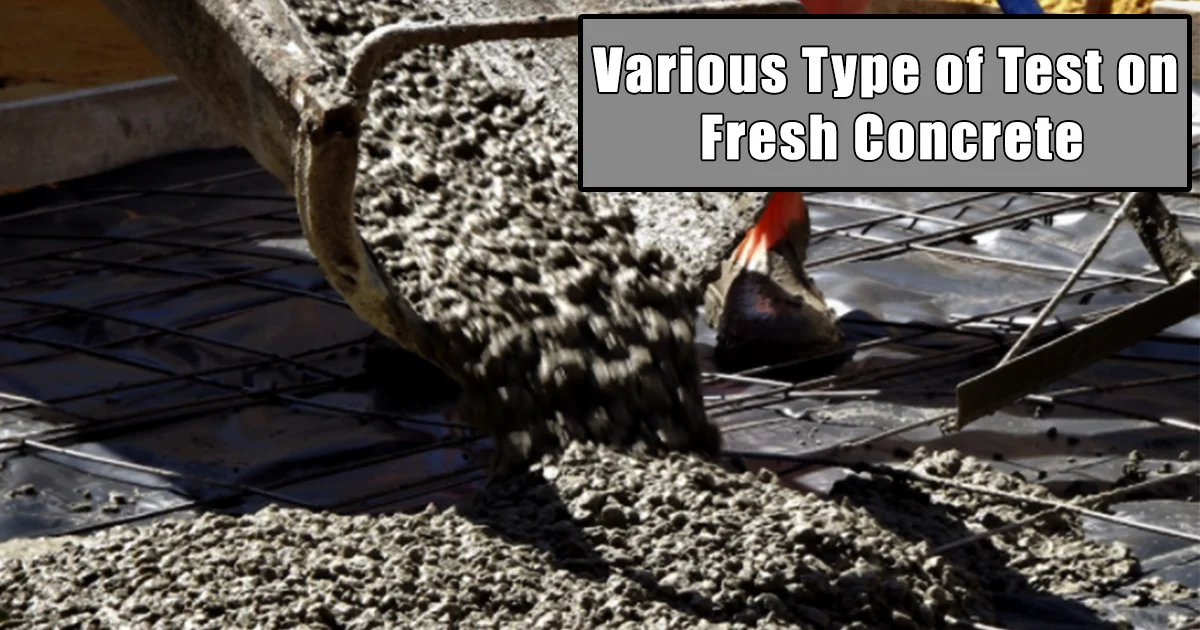Various Type of Test on Fresh Concrete
The following various type of test on fresh concrete given below:
Workability:
The workability of a concrete mix gives a measure of the ease with which fresh concrete can be placed and compacted. The concrete should flow readily into the form and go around and cover the reinforcement, the mix should retain its consistency and the aggregates should not segregate. A mix with high workability is needed where sections are thin and/or reinforcement is complicated and congested.
The main factor affecting workability is the water content of the mix. Plasticizing admixtures will increase workability. The size of aggregate, its grading and shape, the ratio of coarse to fine aggregate and the aggregate-to-cement ratio also affect workability to some degree.
Measurement of Workability
(a) Slump test
The fresh concrete is tamped into a standard cone which is lifted off after filling and the slump is measured. The slump is 25–50 mm for low workability, 50–100 mm for medium workability and 100–175 mm for high workability. Normal reinforced concrete requires fresh concrete of medium workability. The slump test is the usual workability test specified.
Ebook to Read Concrete Building Scheme Design Manual
See More Uses of Plasticisers And Superplasticisers
(b) Compacting factor test
The degree of compaction achieved by a standard amount of work is measured. The apparatus consists of two conical hoppers placed over one another and over a cylinder. The upper hopper is filled with fresh concrete which is then dropped into the second hopper and into the cylinder which is struck off flush. The compacting factor is the ratio of the weight of concrete in the cylinder to the weight of an equal volume of fully compacted concrete. The compacting factor for concrete of medium workability is about 0.9.
(c) Other tests
Other tests are specified for stiff mixes and super plasticized mixes.
Above Fresh Concrete test to be conducted in the all construction site.
